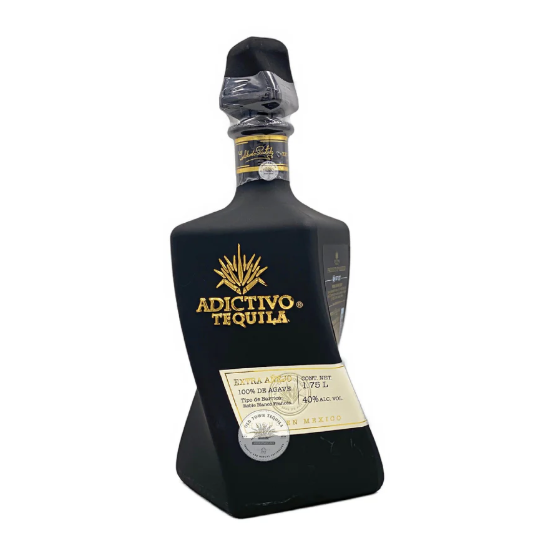A bottle of extra añejo tequila isn’t just a spirit, it’s a masterpiece of craftsmanship, aged for a minimum of three years in oak barrels and designed for sipping, not rushing. Once opened, however, this premium tequila is exposed to elements that can compromise its flavor and character over time. If you want to preserve the integrity of your extra añejo tequila, proper storage is essential. With the right practices, you can continue to enjoy its complex notes for months or even years.
Why Storage Matters for Opened Bottles
Unlike wine, which continues to evolve after opening, distilled spirits such as tequila remain chemically stable but can still degrade in quality if not stored properly. Exposure to air, light, heat, and fluctuating temperatures can impact the aroma, flavor, and overall drinking experience. This is especially true for aged spirits like extra añejo, where subtle nuances can be easily lost.
Step-by-Step Guide to Storing Open Bottles of Extra Añejo Tequila
1. Reseal the Bottle Tightly
After pouring, always reseal the bottle with its original cap or cork immediately. If the cork is damaged or loose, consider replacing it with a synthetic stopper to create an airtight seal. This step helps limit oxidation, which is the primary factor in flavor degradation.
2. Store Upright
Unlike wine, tequila should be stored upright. This prevents the liquid from coming into contact with the cork for extended periods, which can lead to deterioration of both the cork and the spirit’s taste. An upright position also minimizes leakage and evaporation.
3. Avoid Sunlight
Direct sunlight can cause chemical reactions in the tequila, leading to changes in color and taste. Keep your bottle in a dark or shaded area, such as inside a cupboard, cabinet, or a dedicated liquor storage space. If you display your bottle, make sure it’s away from windows or UV exposure.
4. Keep it Cool, Not Cold
Room temperature is ideal for storing extra añejo tequila, ideally between 60°F and 70°F (15°C to 21°C). Avoid extreme temperature changes and never store your tequila in the freezer, as chilling it too much can dull its complex flavors. Heat, on the other hand, can accelerate oxidation and compromise its integrity.
5. Minimize Air Exposure
As you consume your tequila and the liquid level drops, the amount of air in the bottle increases, accelerating oxidation. If you don’t plan to finish the bottle soon, consider transferring the remaining tequila to a smaller glass bottle with an airtight seal. This reduces the amount of air in the container and slows the degradation process.
Comparing Storage Tips: Tequila vs. Rare Bourbon
While rare bourbon and extra añejo tequila are both luxury aged spirits, they require similar yet subtly different care. Bourbon, for instance, is often bottled at higher proof and may be slightly more resistant to oxidation, but both benefit from upright storage and protection from light and temperature swings.
Collectors of rare bourbon often go the extra mile by investing in specialized storage cabinets or climate-controlled cellars. Similarly, tequila connoisseurs can preserve their high-end bottles by adopting these meticulous habits, especially important for aged variants that boast rich, oak-forward profiles.
The biggest shared tip? Avoid neglecting open bottles, even if they’re high-proof. Proper storage ensures your investment in either spirit delivers maximum enjoyment from the first sip to the last.
Tips for Long-Term Storage
If you’re not planning to finish the bottle anytime soon, here are a few long-term storage considerations:
- Invest in a wine preservation pump with a stopper to remove excess air from the bottle.
- Label the bottle with the date it was opened to keep track of how long it’s been exposed.
- Use inert gas sprays to blanket the surface of the tequila and limit oxygen contact.
- Choose amber or dark glass bottles for transfers, which offer better protection from light.
These strategies are especially useful for collectors who open multiple bottles and rotate their sipping options over time.
When to Discard or Finish an Open Bottle
While extra añejo tequila doesn’t spoil in the traditional sense, it can become noticeably flat or off-tasting after a year or more of being open, especially if poorly stored. If you detect any sour, musty, or excessively woody notes that weren’t there before, it might be time to part ways with that bottle or finish it soon.
In general, for the best taste, try to consume an open bottle within 6–12 months. With great care, it can last even longer, but freshness and complexity are always best enjoyed sooner rather than later.
Conclusion
Caring for an open bottle of extra añejo tequila is as much about respect as it is about preservation. From tightly resealing the cap to protecting it from heat and sunlight, every detail counts in maintaining the spirit’s integrity. Whether you’re a tequila enthusiast or a collector of rare bourbon, understanding proper storage techniques ensures that every pour lives up to its premium reputation.





